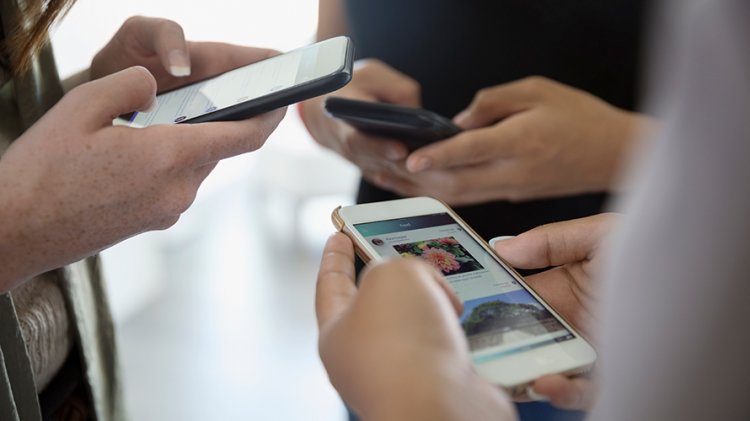In Southeast Asia, notably in Singapore, Indonesia, Thailand, Philippines, Malaysia, and Vietnam, rising mobile and internet penetration has resulted in a considerable increase in online advertising, or digital marketing spending.
Since the introduction of smartphones and social media, the traditional advertising industry has evolved considerably. Brands may benefit from greater conversion rates, cheaper cost per click, important data collection, and more thanks to mobile advertising. So, how is it that mobile advertising has become so popular in recent years? Consider this: how many people in our generation do you think, are using or owning smartphones? I believe that the majority of us had a smartphone with us, and this form of promotion is expected to grow in popularity.
Any sort of advertising delivered on a mobile device, smartphone, or tablet is referred to as mobile advertising. This form of advertising can be found on phones via social media, applications, games, SMS, video streaming, mobile websites, and other methods. As more people spending more time on their smartphones, rather than watching television, brands have been compelled to change their focus to crafting ads that fit in our pockets.
I came upon an article about the top mobile advertising that well-known creative directors acknowledged, along with their reasons for liking them. So, for my fellow readers, I would like to share a few observations with you.
The Next Big Thing Is Already Here
Video by Machinimadotcom on YouTube
This ad was chosen by Sarah Leccacorvi, the head of creative and content at Havas Entertainment. The campaign, “The Next Big Thing Is Already Here”, was created in 2011 to promote Samsung’s Galaxy S3 smartphone. She adores how this ad parodies the devoted following that some tech businesses command, which we all know who they are. It shows unending lines of eager customers waiting to be the first to flaunt their latest purchase, thereby boosting their street cred. The iPhone shopper was unwavering in 2013. Samsung, caught off guard by their patriotism, chose a narrative that hilariously underlines the iPhone’s weaknesses while reacting with the Galaxy S3’s product merits. This campaign not only attracted brand nonconformists and increased attention as a result, but it also questioned the preconceptions of iPhone users. Sarah admired the company’s bold and deliberate decision. It was proved, in this case, that product power triumphed over brand arrogance. This anarchic attitude resulted in some beneficial disruption, which led to Samsung’s emergence as a viable competitor in today’s mobile industry.
Source: The Drum
Phones Are Good
Video by GREAT ADS & LESS GREAT ADS (BUT STILL OK) on YouTube
Three, a British mobile carrier, launched “#PhonesAreGood” back in 2018, a witty campaign by Wieden + Kennedy London that imagines how history would have been different if phones had existed. The two-and-a-half-minute mobile ad looks at a variety of historical periods and what mobile phones would have meant to them, with “Phones” triumphing against “Haters” each time. From saving the Titanic to Neanderthals ordering pizza, Moses’ parting of the Red Sea “pics or it didn’t happen” moment, this ad is legendary. Kenneth Moore, a creative director at We Are Social, chose this as his memorable phone ad. He stated that it had fantastic messaging and extremely playful visuals, and every single scene worked perfectly as independent, sharable vignettes on social, attacking the stereotype that phones are evil. He also liked how this ad provided some balance to the debate over the popular narrative that phones are bad for society, and how this idea was brought to life in a variety of fantastical but relatable historical scenes, all of which featured the phone and provided insight into why phones are actually good.
Source: The Drum
Nokia’s Bruce Lee Limited Edition Commercial
Video by The Phone Commercials Classic on YouTube
Nokia’s N96 Bruce Lee Campaign was chosen by Brandie Tan, an executive creative director from Wunderman Thompson Philippines, as her unforgettable mobile ad. The campaign, which launched in November 2008 from Beijing to mark Bruce Lee’s 35th death anniversary, became one of the first viral advertising hits. It’s a short black-and-white film of Bruce Lee seeming to play Ping Pong. The Nokia N96 is used to confuse the audience into thinking this was shot with its camera. Before the iPhone, phone cameras did not have high resolution, which played nicely with the film’s grainy appearance. In the first phase of the promotion, viewers were also allowed to infer that this was vintage, never-before-seen footage of Bruce Lee because a shorter, unbranded video was leaked beforehand. This was groundbreaking in the early days of promotional content. It even took first place in the Titanium Lions competition. The Titanium Lions category is for projects that don’t fit into any of the other Lions categories. The video is a mental game. People are still debating whether this was a hoax or a real fact as they view it now.
Source: The Drum
Touch Wood
Video by BuildGreenWithWood on YouTube
“It was an extraordinary effort to market their hardwood handset by erecting a massive wooden xylophone in the middle of a forest,” said Dan Fernandez, founder and creative director of EveryFriday. This advertisement, produced by a Japanese agency Drill, Inc., is probably ten years old, but it still fascinates him. The camera work, the music, the setting, the precision, it’s all so characteristically Japanese, and then there’s the perfection in the product placement at the end, when you discover this amazing work of art is actually just a phone commercial. The ad agency claims that no visual or auditory effects were used at all. The video for the ad, which received a Golden Lion at Cannas, was published on March 11, 2011, the same day that Japan was rocked by a massive earthquake. Docomo has no choice but to call off the entire promotion. However on YouTube, the video became viral.
Source: The Drum, Daily Onigiri
Look At Me
Video by Adam Kim on YouTube
This campaign is Pan Fujimoto’s, a creative director at The Many, pick. Samsung has used some highly effective non-traditional efforts to boost its brand in areas other than the United States. What she likes about their campaigns is that they aren’t so much phone advertising but brand development moments through innovations that benefit their customers. As an example, she cited this campaign. Through enhanced eye contact, the instructional smartphone game helped autistic youngsters connect emotionally with their parents. It’s a powerful approach to demonstrate Samsung’s commitment to putting people first.
Source: The Drum
Netflix’s “Black Mirror” Mobile Campaign

This is without a doubt my favourite mobile ad. As a Netflix subscriber, I couldn’t get this ad out of my head. This ad appeared on my phone as I was surfing a website, and I can still recall it. Despite the fact that I have an ad blocker installed, it continues to appear. What’s eerie and unforgettable was the message written, “Hello ad blocker user. You cannot see the ad, but the ad can see you.” This is a fantastic approach to promote the programme, and it fits in perfectly with the show’s grim parody of modern technology. It turns out that they want to contact this difficult-to-reach population and are looking for a unique strategy to do so. The brand generated a lot of talk online by making the user’s phone look like it had a realistic cracked screen with a creepy message on it. The ad gave viewers the impression that they were watching an episode of Black Mirror, and it received media notice for its uniqueness. “More than 1 million postings on the series, 30 times more dialogue than season two,” according to the mobile marketing.
Source: CleverTap, Digiday
Conclusion
Mobile advertising, unlike other forms of advertising, is extremely advantageous due to its greater accessibility, cost-effectiveness, and, most significantly, personalization. With all of these benefits, mobile advertisements are unquestionably here to stay and will continue to control the world of digital marketing for some time. If you’re a business owner who uses mobile phone advertising, you can be comfortable that you’ve chosen the most effective marketing method for your company.














